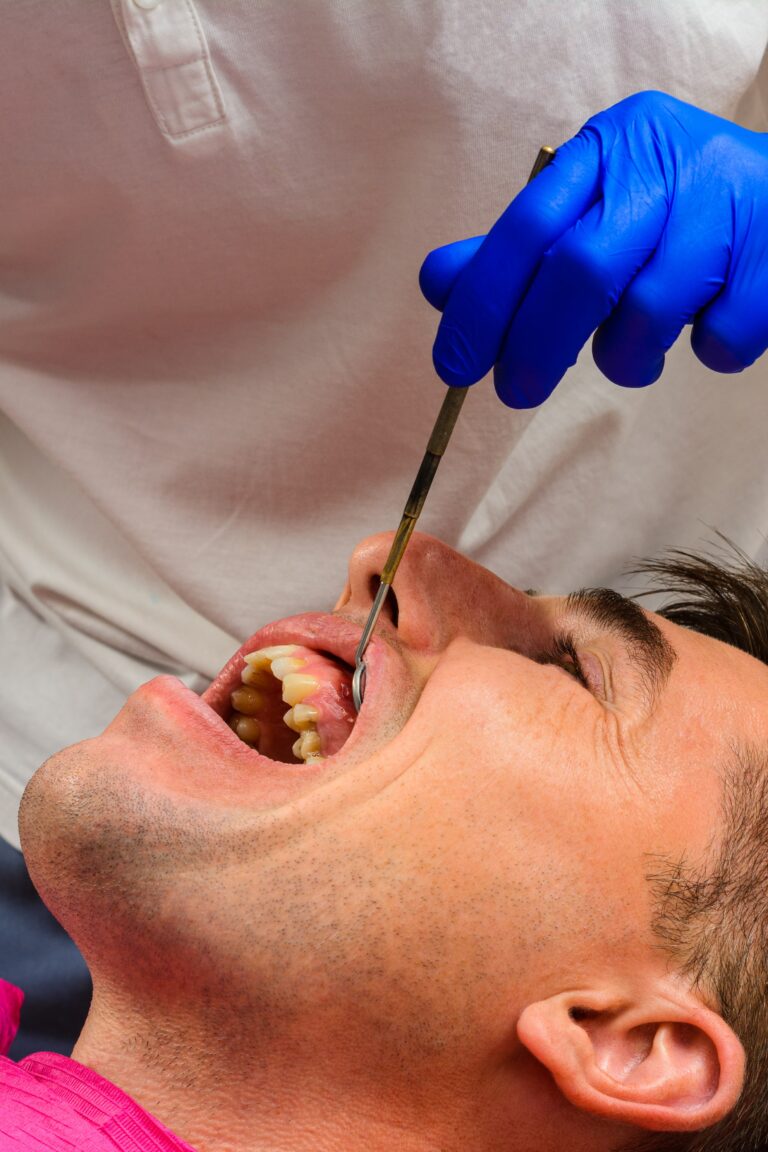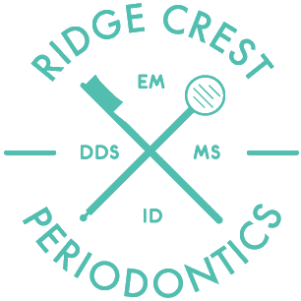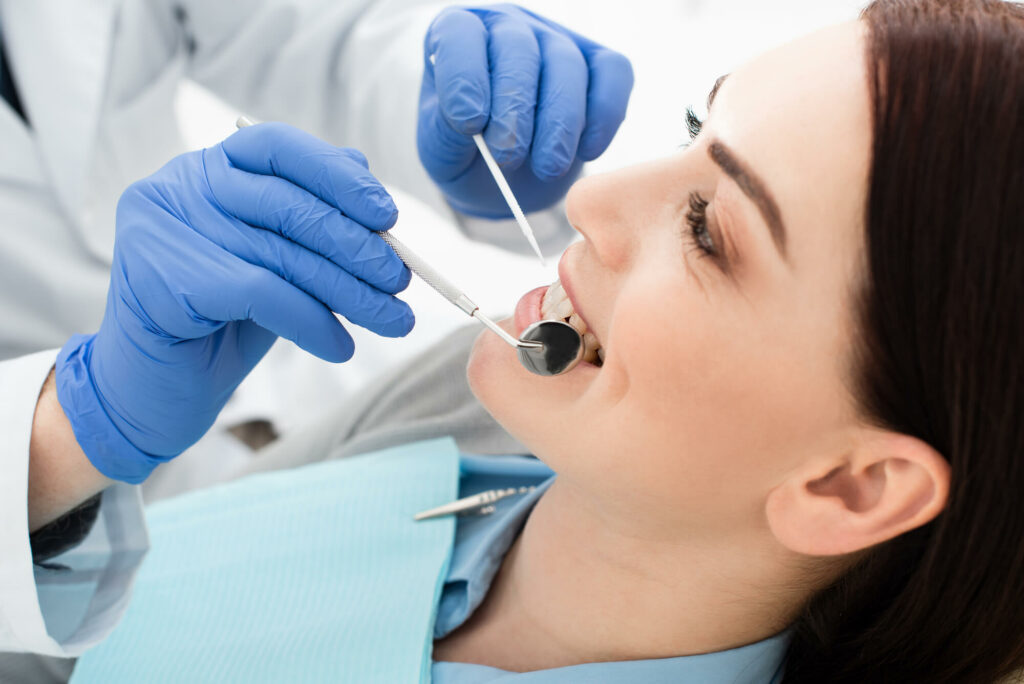It’s no secret that caring for your teeth is an essential part of maintaining good oral health for a lifetime. What you may not realize is that maintaining healthy gums is equally important. While gum disease is among the most common dental concerns that affect people of all ages, the good news is that it can easily be prevented with good dental hygiene, including brushing and flossing twice a day. Here’s what you should know about treating and preventing periodontal disease before scheduling your next appointment with the trusted team at Ridge Crest.
What is Gum Disease?
According to the American Dental Association, periodontal disease, also called gum disease or periodontitis, occurs when your gums become infected by bacterial growth below the gum line. As plaque hardens around your gums, bacteria can make your gums recede. Untreated gingivitis (the earliest stage of gum disease) can lead to moderate periodontal disease, causing inflammation, irritation, and the erosion of the soft gum tissue of your mouth.
When left to its own devices, gum disease can quickly progress and lead to more serious health problems, including receding gums, tooth loss, jaw bone erosion, and respiratory disease. Gum disease can occur as a result of many risk factors, including hormonal changes and genetics, but in most cases, is caused by poor oral hygiene habits, including not removing food particles from between crooked teeth.
Fast Facts on Periodontal Disease
- Gum disease, also known as periodontitis, affects the region around the tooth roots, including the bone and gums.
- It occurs when germs and plaque build up around the tooth, triggering an immunological response.
- Treatment and prevention include good dental hygiene, however, surgery may be required in some cases.
- Smoking increases the likelihood of gum disease and treatment failure.
- Gum disease appears to be linked to problems elsewhere in the body, such as heart disease.

What Are the Signs and Symptoms of Periodontitis?
Periodontal gum disease can develop and worsen over time, often without any symptoms. While this is true, certain warning signs could indicate that your gums are at risk of developing periodontal disease, including:
- Bleeding gums
- Sensitivity
- Gum inflammation
- Swollen gums
- Bad breath
- Painful chewing
- Gum recession
- Loose teeth or tooth loss
Like other dental concerns, untreated gum disease will not go away on its own. For this reason, it’s important to seek professional dental care as soon as possible if you notice or more of the symptoms of gum disease.
How is Gum Disease Diagnosed & Treated?
Because gum disease cannot be seen by your naked eye, only a dentist can diagnose it. This is done through a physical exam in which the dentist will observe the condition of your gums. They will do so by measuring the periodontal “pockets” of your gum line around each tooth. If the dentist determines that you do have gum disease (from mild gingivitis to advanced periodontitis), it’s important to treat it right away to prevent it from getting worse.
The dentist will likely recommend that you have a deep cleaning performed by a dental hygienist to remove plaque and restore the health of your infected gums, along with brushing and flossing at home twice a day. Like routine dental cleanings, a deep cleaning is used to remove the sticky plaque buildup that can lead to periodontal problems if left untreated. However, they also include root planing, which removes dental plaque and tartar below your gum line as well. The process of scaling and root planing can take between 1-2 hours and should be virtually painless, although your teeth may be sensitive after it’s completed.
Deep cleanings are beneficial for a number of reasons, particularly severe periodontitis, including:
- Preventing the progression of periodontitis and bone loss
- Treating bacterial infection and inflammation
- Cleaning your teeth and gum line
- Improving your oral health
For most patients diagnosed with gum disease, periodontal surgery or periodontal therapy isn’t necessary. However, if you’ve experienced if you’ve lost bone or if you continue to develop infections, a surgical procedure may be required, such as bone grafting.
Health Conditions Associated with Gum Disease
According to the Centers for Disease Control and Prevention (CDC) and the National Institute of Dental and Craniofacial Research, periodontal disease is linked to an increased risk of:
- diabetes
- illness of the heart
- stroke
- illness of the lungs
It also increases the chances of a woman having a premature or low-birth-weight baby.
Although gum disease has been linked to many illnesses, it has not been proven to be the cause. More research is needed to figure out the intricacies of this correlation.
Tips to Prevent Periodontal Disease
While gum disease is very common, it can be prevented with good oral hygiene habits at home. To keep your teeth and gums strong and healthy and to prevent experiencing gum disease, the American Dental Association recommends these good oral hygiene tips:
- Brushing your teeth twice a day with a fluoride toothpaste
- Using dental floss and use mouth rinse every day
- Regular dental checkups and professional cleanings every six months
Ridge Crest Can Help You Prevent Gum Disease
If it’s been a while since you’ve been to the dentist for a routine check-up and professional dental cleaning, now is the time to prioritize your oral health. Our compassionate team is eager to help you keep your teeth and gums in great condition for years to come with our progressive techniques, quality materials, and comfortable care. Contact us today to learn more about gum disease treatment in idaho falls, how to keep your teeth and gums healthy, prevent periodontal disease, and schedule your next dental exam with Ridge Crest Periodontics.



